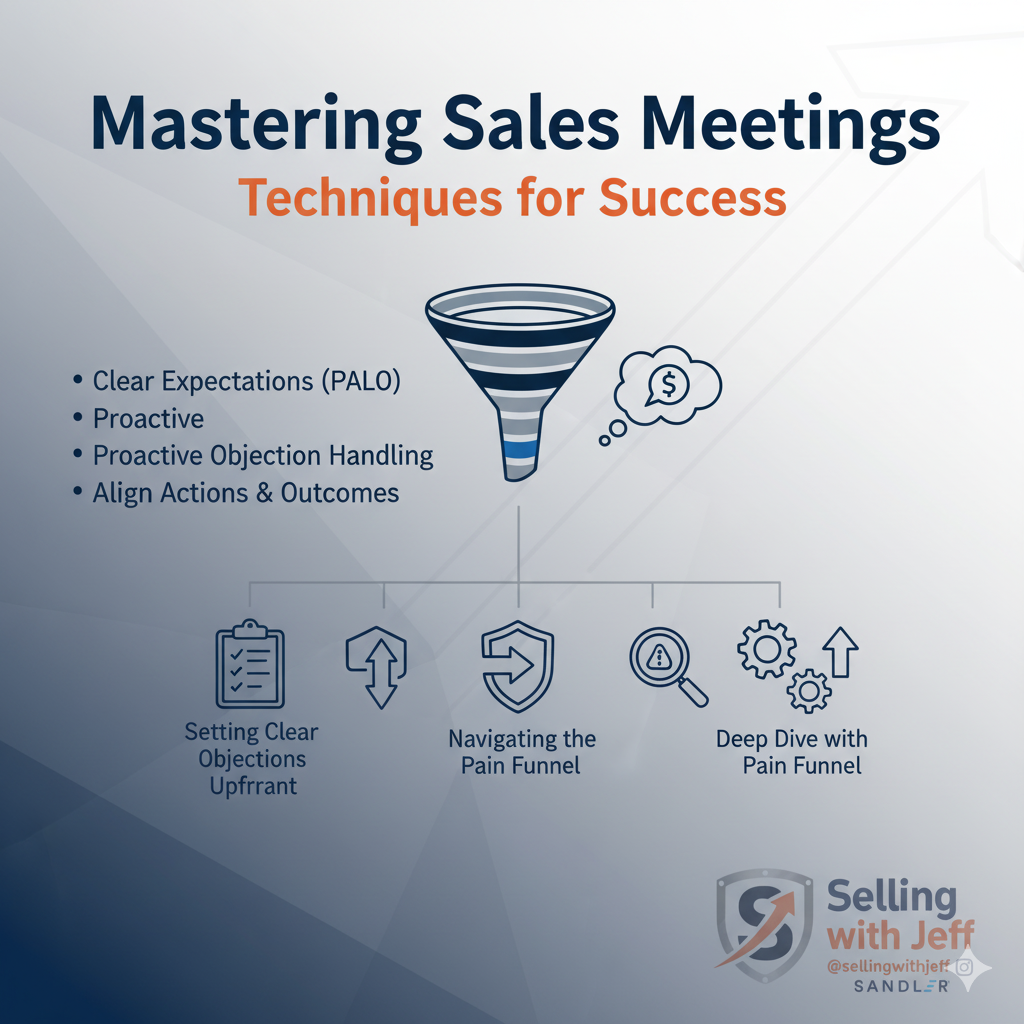Mastering Sales Meetings: Techniques for Success

Unlock the Secrets to Conducting Effective and Impactful Sales Meetings Using Proven Strategies from the Sandler Selling System and Real-World Experience
Setting Clear Expectations from the Start
A successful sales meeting begins long before you step into the room or join the Zoom call. Setting clear expectations from the outset is crucial. This involves defining the purpose of the meeting, outlining the agendas for both parties, and establishing the logistics - who will be attending, the meeting platform, and the duration. This structured approach, often referred to as the PALO method (Purpose, Agenda, Logistics, and Outcome), ensures that everyone is on the same page and paves the way for a productive discussion.
For instance, starting a meeting with a well-crafted PALO can help you avoid common pitfalls, such as undefined objectives or misaligned expectations. By clearly stating the purpose and desired outcomes, you create a roadmap that guides the meeting towards a meaningful conclusion. This not only saves time but also enhances the likelihood of achieving mutually beneficial results.
Handling Objections Upfront: The PALO Method
One of the cornerstones of the Sandler Selling System is the proactive handling of objections. Addressing potential roadblocks early in the conversation can significantly improve the outcome of your sales meetings. The PALO method plays a pivotal role in this aspect as well.
Imagine walking into a meeting knowing that the client might object to the budget. Instead of waiting for this issue to arise later, incorporate it into your initial discussion. Ask questions like, "Is there a specific budget we need to be aware of?" By bringing these concerns to the forefront, you not only demonstrate transparency but also build trust. This approach allows for a more honest and open dialogue, where objections are seen as natural parts of the conversation rather than disruptive elements.
Navigating the Pain Funnel for Deeper Insights
Understanding the client's pain points is essential for crafting a compelling sales proposition. The Pain Funnel, another critical component of the Sandler Selling System, helps you delve deeper into the issues that matter most to your prospects. This method involves a series of questions designed to uncover the root causes of the client's challenges, their impact, and the emotional response they elicit.
For example, if a client mentions that project delays have been a recurring problem, don't stop there. Ask follow-up questions like, "How long has this been an issue?" and "What have you tried to resolve it?" By digging deeper, you uncover the true extent of the problem and position yourself as a knowledgeable advisor who can offer tailored solutions. This not only enhances your credibility but also increases the likelihood of a successful outcome.
Aligning Actions and Outcomes for Success
The final piece of the puzzle is ensuring that the actions agreed upon during the meeting are aligned with the desired outcomes. This involves setting clear, actionable steps that both parties will take following the meeting. The closing PALO is instrumental in this process, as it helps you summarize the discussion and confirm the next steps.
For instance, if the meeting concluded with a commitment to provide a detailed proposal, make sure to outline the timeline and any additional information needed. This keeps both parties accountable and ensures that the momentum generated during the meeting is maintained. By clearly defining the actions and outcomes, you create a sense of shared responsibility and drive the process forward.
In conclusion, mastering sales meetings requires a combination of clear expectations, proactive objection handling, deep insights into client pain points, and aligned actions. By leveraging the Sandler Selling System and incorporating real-world strategies, you can enhance the effectiveness of your sales meetings and achieve better outcomes.


